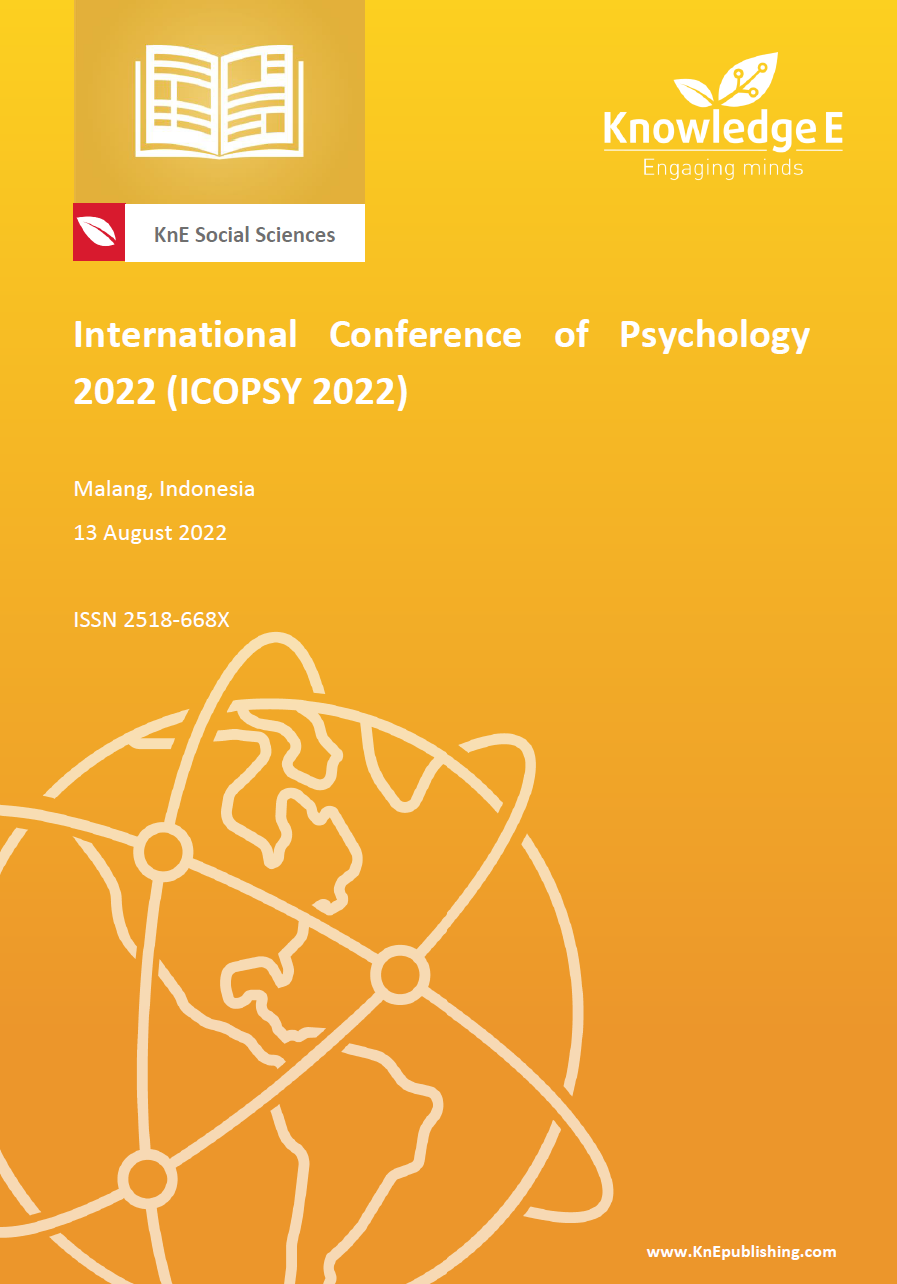Potential Discrimination and Coping Strategy Models Implemented by Indonesian Trainees in Japan
DOI:
https://doi.org/10.18502/kss.v7i18.12402Abstract
The Indonesian Diaspora has been active in sending large amounts of remittances. The big contribution was mainly given by TITP trainees from Indonesia. Indonesian TITP trainees in Japan are divided into first-year trainees ( jisshusei) and subsequent-year trainees (kenshusei). Amidst a difficult situation, Indonesian TITP trainees who work in dirty, dangerous, and demeaning sectors also have to face various problems related to discrimination which can increase their stress levels. The researchers examined the potential discrimination faced by the trainees through research conducted on three kenshusei who have returned to Indonesia. The three kenshusei were interviewed using the in-depth interview method. This paper discusses how the three kenshusei solved their problems with the concepts of coping strategies namely: strengthening ethnic identity, seeking social support, and channeling anger. From the results of the study, it was found that the discrimination experienced by those kenshusei could be overcome with 3 models of Brandolo’s coping strategies and 6 other models of coping strategies.
Keywords: TITP trainees, discrimination, kenshusei, jisshusei, coping strategies
References
[2] Gil-González D, Vives-Cases C, Borrell C, Agudelo-Suárez AA, Álvarez-Dardet C. Social determinants of self-perceived discrimination in Spain. Public Health. 2013;127(3):223–230. http://doi.org/10.1016/j.puhe.2012.11.009
[3] Mariani MG, Soldà BL, Curcuruto M. Employee safety motivation: Perspectives and measures on the basis of the self-determination theory. Medicina del Lavoro. 2015;106(5):333–341.
[4] Sasaki A, Ogawa R. Social stratifications of migrant care workers in Japan. Asean Social Work Journal. 2019;7(1):15-34.
[5] Dudley J. Exploitation among foreign nationals The technical intern training program in Japan. 2021, January 15. https://storymaps.arcgis.com/stories/5e0bad6b732e44808f778078bed1c9fd
[6] Setyowati, Shun O, Yuko HO, Yetti K. Indonesian nurses’ challenges for passing the national board examination for registered nurse in Japanese: Suggestions for solutions. Southeast Asian Studies. 2012;49(4):629-642.
[7] Arju Media. Suka duka kerja magang di Jepang job genba-kerja di Jepang di musim panas [Video]. Youtube. 2020, August 21. https://www.youtube.com/watch?v=AqBmjvyoZUo&t=523s
[8] Iskandar K. Trajektori sosial ekonomi TKI perawat ke Jepang dalam perspektif global value chain [Unpublished doctoral dissertation]. Universitas Indonesia; 2016.
[9] Iskandar K. Japan aging issues, Long Term Care Insurance (LTCI) and the migration of Indonesian nurse to enter Japan labor market. Journal of Strategic and Global Studies. 2020;2(2):18-39. https://doi.org/10.7454/jsgs.v2i2.1020
[10] Kuptsch C, Oishi N. International migration papers. Geneva: International Labour Office; 1994.
[11] Neo Japan. Tidak seperti di drama Jepang! tidak semuanya orang pabrik itu baik dan tulus! =kisah ku! [Video]. Youtube. 2020, December 27. https://www.youtube.com/watch?v=YJz2v-PLCoc
[12] Pusat Penelitian Sumber Daya Regional Lembaga Ilmu Pengetahuan Indonesia. Diaspora Indonesia di Jepang: Potensi dan tantangan. News. 2017, April 25. http://psdr.lipi.go.id/news-and-events/news/diaspora-indonesia-di-jepangpotensi- dan-tantangan.html
[13] Gifari I, Iskandar K. Analisis subjektifitas media daring Jepang mengenai isu larangan keluar masuk Jepang pada masa pandemi virus Covid-19: Sebuah penelitian semiotik. Humanika. 2020;27(2):82-94. https://doi.org/10.14710/humanika.v27i2.33494
[14] UN Women. Public attitudes towards migrant workers in Japan, Malaysia, Singapore, and Thailand. Thailand: International Labour Organization Publications; 2020.
[15] Sayekti NW. Kebijakan Jepang terhadap tenaga kerja imigran: Analisis pada masa pemerintahan Shinzo Abe periode Ke-2 [Skripsi, Universitas Negeri Sebelas Maret]. Institutional Repository Universitas Negeri Sebelas Maret. 2016. https://digilib.uns.ac.id/dokumen/detail/53666/Kebijakan-Jepang-Terhadap-Tenaga- Kerja-Imigran-Analisis-pada-Masa-Pemerintahan-Shinzo-Abe-Periode-Ke-2
[16] Cornelius WA, Tsuda T. Controlling immigration: The limits of government intervention. Controlling Immigration: A Global Perspective. 2004;2:3-48.
[17] Yoichi.3K. . So I [Comment on the blog post “!goo”]. 2018, March 24. https://hataractive.jp/useful/2708/
[18] McCornac D, Zhang R. Japan’s migrant worker conundrum A look at the challenges faced by Chinese migrant workers in Japan’s construction industry. The Diplomat. 2016, November 15. https://thediplomat.com/2016/11/japans-migrantworker- conundrum/
[19] Arai J, Nikkei. Foreign worker in Japan earn only 70% of average pay. Nikkei Asia. 2020, April 1. https://asia.nikkei.com/Spotlight/Japan-immigration/Foreign-workersin- Japan-earn-only-70-of-average-pay
[20] Nawawi NFN. Working in Japan as a trainee: The reality of Indonesian trainees under Japan’s industrial training and technical internship program. Jurnal Kependudukan Indonesia. 2016;5(2):29-52.
[21] Ratnayake P, De Silva S, Kage R. Workforce development with Japanese technical intern training program in Asia: An overview of performance. 2016;49(3).
[22] Brown ES. Racialization in a ‘homogenous’ society? The case of Buraku People in Japan. Asian Ethnicity. 2013;14(1):1-28. https://doi.org/10.1080/14631369.2012.689556
[23] Szczepanski K. The Buraku-”Untouchables” of Japan. ThoughtCo. 2018, January 22. https://www.thoughtco.com/the-buraku-untouchables-of-japan-3981251
[24] Tabuchi T, Fukuhara H, Iso H. Geographically-based discrimination is a social determinant of mental health in a deprived or stigmatized area in Japan: A cross-sectional study. Social Science & Medicine. 2012;75(6):1015-1021. https://doi.org/10.1016/j.socscimed.2012.04.030
[25] Aldwin CM, Revenson TA. Does coping help? A reexamination of the relation between coping and mental health. Journal of Personality and Social Psychology. 1987;53(2):337. http://doi.org/10.1037//0022-3514.53.2.337.
[26] Brandolo E, Ver Halen NB, Pencille M, Beatty D, Contrada RJ. Coping with racism: A Selective Review of The Literature and a Theoretical and Methodological Critique. Journal of Behavioral Medicine. 2009;32(1):64-88. http://doi.org/10.1007/s10865- 008-9193-0.
[27] Rasmus S, Turunen M, Luomaranta A, Kivinen S, Jylhä K, Räihä J. Climate change and reindeer management in Finland: Co-analysis of practitioner knowledge and meteorological data for better adaptation. Science of The Total Environment. 2020;710:136-229. https://doi.org/10.1016/j.scitotenv.2019.136229
[28] Lazarus RS, Folkman S. Stress, appraisal, and coping. New York: Springer; 1984.
[29] Stuart GW. Principles and practice of psychiatric nursing. 10th ed. St. Louis Missouri: Elsevier Mosby; 2014.
[30] Locke EA, Taylor MS. Stress, coping, and the meaning of Work. In Monat A, Lazarus RS, editors. Stress and coping: An anthology. Columbia University Press; 1991. p. 140-157.
[31] Wada T. 67% of missing foreign trainees worked below minimum wage: Opposition parties. The Mainichi Japan’s National Daily Since 1922. 2018, December 4. https://mainichi.jp/english/articles/20181204/p2a/00m/0na/008000c
[32] Nippon Keidanren. Interim recommendations on accepting Non-Japanese workers – Bring dynamism of diversity into Japan by opening doors to transnational human resources–. Nippon Keidanren ( Japan Business Federation). 2003, November 14. https://www.keidanren.or.jp/english/policy/2003/108.html

